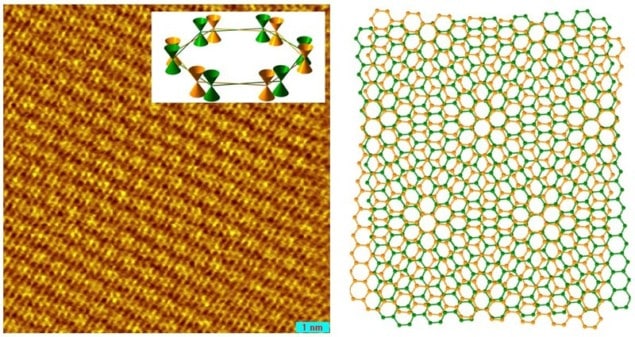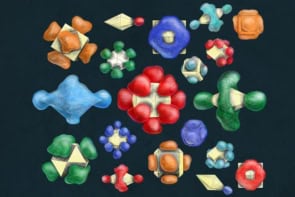
Physicists in the US and UK have worked out why different samples of multilayer graphene can have very different electronic properties. The answer, according to the team, lies in the relative rotation between layers and the discovery could lead to a new way of controlling the electronic properties of the material.
Graphene is a freestanding layer of carbon just one atom thick and thanks to its 2D nature has a host of unique electronic properties not seen in thicker carbon films. This includes conduction electrons that appear to travel near to the speed of light and have zero mass – so called Dirac fermions. These and other properties of graphene could make it very useful in making ultrafast electronic devices.
Theory suggests that graphene multilayers several atoms thick should not contain Dirac fermions because electron coupling between layers destroys its 2D nature. However, Dirac fermions have been spotted in some multilayers grown by depositing carbon atoms on surfaces, which has puzzled physicists.
A new angle
Now Eva Andrei and colleagues at Rutger’s University, Massachusetts Institute of Technology and the University of Manchester have found that the relative angular orientation between successive layers plays a key role in whether or not a multilayer contains Dirac fermions.
The team creates its multilayer samples by depositing carbon onto a nickel surface. The graphene is then lifted off the surface using chemical and studied using a transmission electron microscope to work out the relative angle between the 2D lattices of each layer.
The presence of Dirac fermions was determined using Landau level spectroscopy, whereby a magnetic field is applied to the material. This causes the electrons in each layer to adopt quantized circular orbits – or Landau levels. The energies of these levels are measured using scanning tunnelling spectroscopy and are distinct for Dirac fermions.
Rotated stacks
The team looked at samples where the orientation of graphene layers was close to the most common stacking scheme (Bernal), whereby successive layers are rotated by 60° to each other. They found that when successive layers were offset by about 22° from Bernal stacking, the electrons behaved just like Dirac fermions found in single layers. However, at much smaller rotation angles of about 4°, the velocity of the electrons had dropped to about 80% of that in a single layer.
Also involved in the research is Andre Geim of the University of Manchester, who shared the 2010 Nobel Prize for Physics for his work on graphene. He speculates that the Dirac fermions are seen because the rotation breaks the spatial symmetry between the layers. This could reduce the coupling between layers, making each layer a 2D system.
A third sample was studied with a rotation angle of about 1.2° and this had no evidence of Dirac fermions.
Changing the angle at will
Andrei now plans to repeat the measurements at different twist angles. “New graphene transfer methods opened up possibilities for designing experiments in which we can change the angle at will and exploit these properties for device applications,” she explained. Looking further into the future, Andrei speculates that graphene could be patterned with regions of different twist to create electronic devices.
Sankar Das Sarma of the University of Maryland, who was not involved in the research, described the work as “an important milestone in graphene research” that will encourage physicists to study various properties of twisted graphene. However, he pointed out that “much more experimental work on transport and optical properties would be necessary” before technological applications could be considered.
The work is reported in Phys. Rev. Lett. 106 126802.



